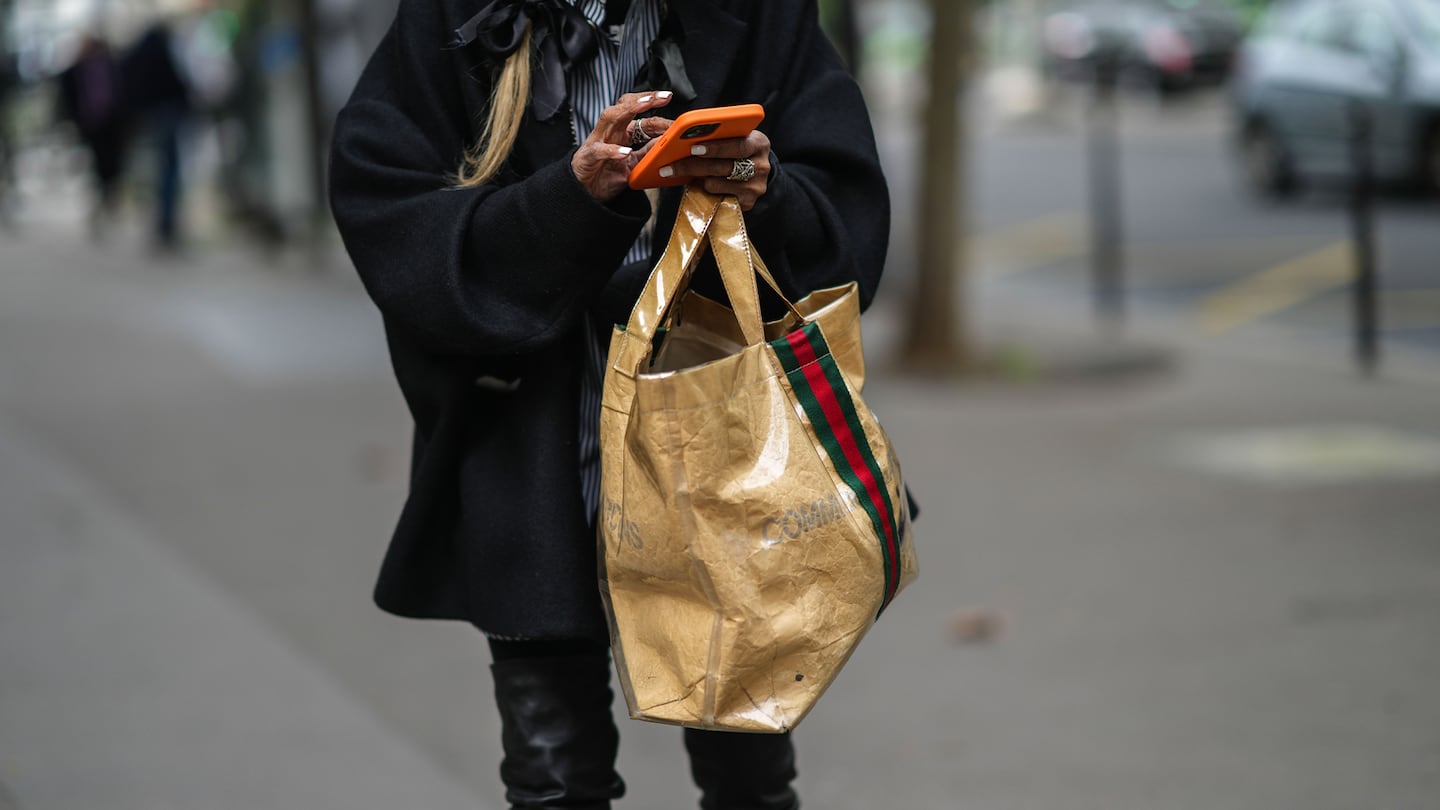
The Business of Fashion
Agenda-setting intelligence, analysis and advice for the global fashion community.

Agenda-setting intelligence, analysis and advice for the global fashion community.

As promotional emails are increasingly relegated to the spam folder, brands are embracing another direct mode of consumer communication: Texting.
The convenient and intimate nature of text message marketing — versus the formal and inundating feel of emails — has helped get consumers to pay more attention to brands. So far this year, sales driven by text messages rose 35 percent year-over-year versus a 5 percent increase from emails, according to e-commerce data on more than 100 brands from marketing strategy and services firm Belardi Wong.
What was once considered a novel marketing tactic most brands ignored, they’re now ramping up their investment in: In 2022, 72 percent of 500 brands surveyed by marketing software provider Klaviyo said they were likely to start sending customers text message campaigns in the next year.
“As Gen-Z is ageing into the workforce and the largest group in the US is now Millennials, you have a completely digitally native consumer class that is used to texting a lot,” said Mike Manheimer, chief marketing officer at marketing software firm Postscript.
ADVERTISEMENT
Text message marketing can be particularly effective for fashion and beauty brands. Companies can use it to send customers updates about their orders and offer exclusive access to new products and discount codes. It helps that fashion consumers tend to be excited about their purchases and therefore receptive to messages about those transactions.
The channel has practical benefits as well. Economic headwinds have mounted pressure for businesses to increase sales and grow profits, and customer acquisition costs have risen. With that, brands want to find more ways to satisfy the consumers already in their orbit — and advertising via SMS is known to aid in customer retention.
To avoid the same pitfalls that can befall email marketing and make the most of the channel, brands need to manage how often they reach out to customers and offer more tailored content than they are accustomed to delivering over email.
“Fashion and beauty are high emotion categories,” said Benjamin Bond, a principal consumer growth strategy consultant at management consulting firm Kearney. “Brands in those spaces have more than openness from consumers to have ongoing engagement.”
To get customers to sign up for text messages, it’s standard industry practice for brands to offer promo codes in exchange for their email address or phone number.
While the conversation starts there, it should soon develop into a two-way dialogue. Many brands undercut the potential of text message marketing by not having a true back-and-forth with customers.
When shoppers reply to text campaigns, they often get an automated message instead of a tailored reply in the brand’s distinct voice. But crafting unique two-way responses is a way to collect data about customers’ preferences that helps brands personalise their content, which they often struggle to do on their sites.
This is best done through campaigns that are geared toward eliciting responses and generating conversation rather than driving a single transaction. For example, a brand could message customers asking their opinions on which colours they like for a particular season and then follow up with photos of items in those colours and ask if they would wear them. Now, the brand knows exactly what colours and silhouettes its subscribers are most apt to purchase.
ADVERTISEMENT
When used effectively to develop that customer relationship, text message advertising can be a powerful customer retention tool. In a 2023 survey of 900 brands, nearly 80 percent said they use text messages to drive repeat purchases from customers, according to marketing software firm Attentive. More than half of those brands said they will increase their marketing spend on text message campaigns this year.
“It’s not the right thing to try to automate away every possible interaction you can have with your customer,” Manheimer said. “Is it worth it to deepen your relationship with your best customers? The answer to that question is always yes.”
However personal text message marketing can be, the goal should ultimately be to get customers to buy more goods.
“This should be a revenue-driving channel,” said Calla Murphy, vice president of digital strategy and integrated marketing at Belardi Wong. “Driving loyalty is driving another purchase. If they’re not clicking through and buying, what is the value there?”
But if brands send updates about product releases and discounts too often, they run the risk of pushing those customers away, said Josh Mendelsohn, director of product marketing at Klaviyo. Text message marketing is an easy channel for customers to cut off as they only have to text “stop” to unsubscribe from a brands’ text list.
Developing a cadence of when to reach out to customers via text is brand and audience-specific. The more tailored the content is to each customer, the better the chances that those shoppers will engage with and shop from those messages, even if they’re frequent, said Sara Varni, chief marketing officer at Attentive.
“You can send a fair amount of SMS in a month if it’s personalised and relevant,” Varni said. “Where we do see drop off is when people are taking the batch and blast [approach].”
Maternity apparel brand Hatch is working to strike this balance. In addition to collecting contact information in the sign-up process, Hatch also asks for customers’ due dates. It then sends emails and text messages with product recommendations, along with informative articles from their blog Babe by Hatch, based on how far along the customer is in their pregnancy.
ADVERTISEMENT
Since the final quarter of 2022, the brand has been sending more educational text messages imbued with humour, such as an article about postpartum marijuana consumption.
“On text, we’ve changed our strategy recently, getting more content-driven and whimsical, instead of saying ‘Hey, 30 percent off nursing bras,’” said Ariane Goldman, CEO of Hatch Collective, Hatch’s parent company.
Hatch has found that customers who give their due dates and opt into receiving text messages spend 28 percent more than other customers.
“If you’re committed to helping your customers, ultimately they will be customers for life and it will lead to purchases,” Varni said.
In a saturated market where customer acquisition costs are on the rise, fashion and beauty start-ups are exploring ways to boost repeat business.
Luxury retailers have long gone the extra mile to serve top-spending VIPs. Now, more brands are finding ways to scale personalised customer service. Here’s how to get it right.
Companies are using personal exchanges via text, WhatsApp and Instagram to build a more intimate relationship with consumers.

Malique Morris is Direct-to-Consumer Correspondent at The Business of Fashion. He is based in New York and covers digital-native brands and shifts in the online shopping industry.
Practitioners of this historically behind-the-scenes profession are building powerful followings, riding a wave of interest in how the fashion sausage is made. But even the highest-profile PRs caution that the client still has to comes first.
Join us for a BoF Professional Masterclass that explores the topic in our latest Case Study, “How to Create Cultural Moments on Any Budget.”
When done effectively, a cultural partnership can rightfully earn its own place in the zeitgeist. But it’s not so easy as just hiring a celebrity to star in an ad campaign; brands must choose a partner that makes sense, find the format that fits best and amplify that message to consumers.
Calvin Klein’s chief marketing officer Jonathan Bottomley speaks to Imran Amed about the strategy behind the brand’s buzzy Jeremy Allen White-fronted campaign.